Samsung Galaxy S24 Ultra Review
The Galaxy S24 Ultra has finally landed the Philippines. It is, by far, Samsung’s best flagship smartphone; and it might very well be one of the best that ever launched this quarter.
However, Samsung’s new flagship phone brings expected but uneven improvements. Samsung enhanced some core areas like visuals and battery life but fell a little short of achieving mobile AI greatness many hoped for.
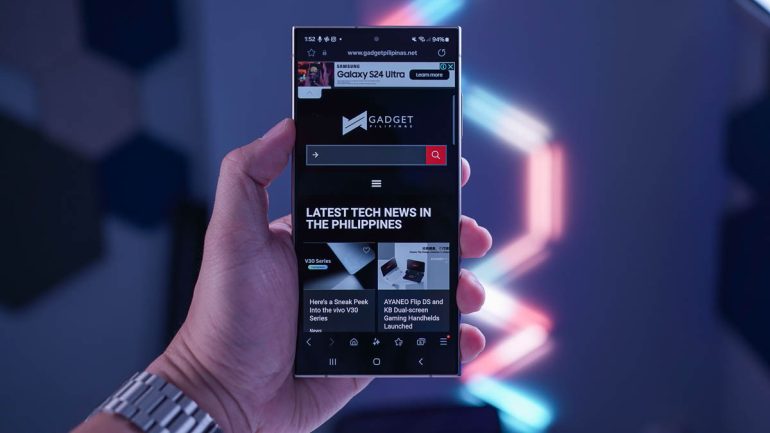
Read our first impressions here: https://www.gadgetpilipinas.net/2024/01/samsung-galaxy-s24-ultra-first-impressions/
As the latest model in Samsung’s premium S series, the S24 Ultra refines an already proven formula. Changes feel more evolutionary than revolutionary, with modest design tweaks, upgraded internals, and bolstered photography capabilities defining this generation’s enhancements. Battery runtime notably impresses as well, but ambitious AI features display unfulfilled potential so far. Don’t get me wrong – the AI features are extraordinary and pioneering, and I am having a great time, but some of the features are not exclusive to the Galaxy S24 series, making it lose a sense of exclusivity. The future, in this regard, is both bright and dim – depending on your perspective, but I’ll get into that later on.
Galaxy S24 Ultra Specifications
| Display | 6.8-inch QHD+ Dynamic AMOLED 2X 120Hz refresh rate |
| Processor | Snapdragon 8 Gen 3 Mobile Platform for Galaxy |
| RAM | 12GB |
| Storage | 256/512GB/1TB |
| Rear Camera | 200MP main (OIS, f/1.7) 50MP periscope telephoto (5x optical zoom, OIS, f/3.4) 12MP ultrawide (f/2.2) 10MP telephoto (3x optical zoom, OIS, f/2.4) |
| Front Camera | 12MP (f/2.2) |
| Battery | 5000mAh 45W wired fast charging Fast wireless charging Wireless PowerShare 2.0 |
| OS | One UI 6.1 (Android 14) |
| Colors | Titanium Black Titanium Gray Titanium Violet Titanium Yellow |
Build and Design: Same, but a little new at the same time
Users can expect an immediately familiar in-hand feel from the S24 Ultra. Both the curved 6.8 Quad HD+ AMOLED 2x display and aluminum frame match previous S series models practically millimeter for millimeter. While comfortable and well-built as expected from Samsung, the similar silhouette blends premium with design predictability.
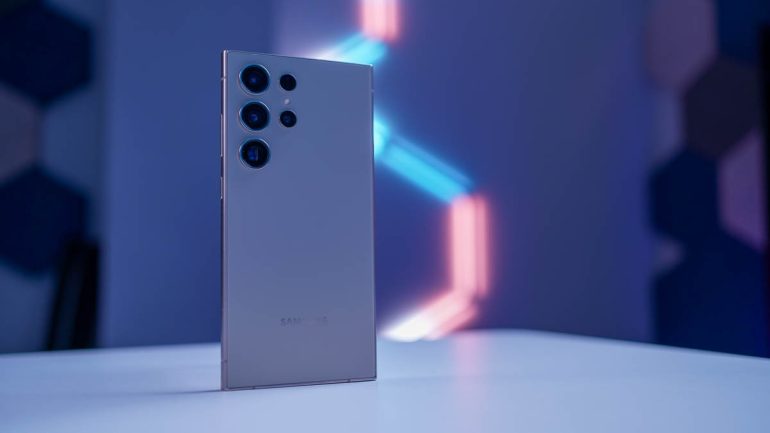
Despite certain predictabilities, the new Galaxy S24 Ultra packs a new Corning Gorilla Armor that does not just protect the display but also gives it a non-reflective coating. Thumbs up with that (while trying to imitate Zack Nelson of Jerry Rig Everything).
Apart from a slightly reduced rear camera bump enabling a sleeker but flatter profile, the S24 mirrors last year’s aesthetic beats. Signature S series traits like IP68 dust/water resistance and built-in S Pen support also reprise their roles. Ultimately the minor facelift puts iterative refinement over radical reimagination.
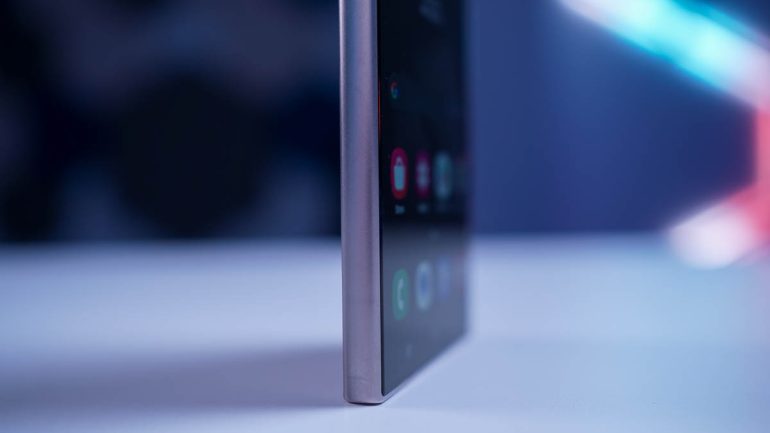
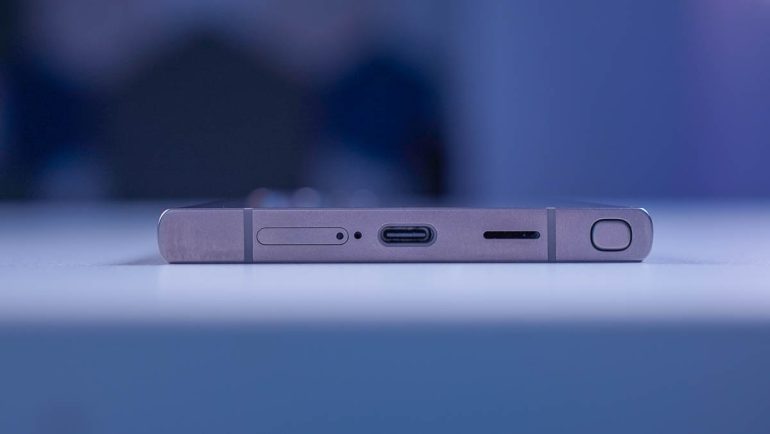
The Galaxy S24 Ultra – due to its titanium build – is extra slippery to the touch. It is highly recommended to slap a case on day one to avoid availing of the included Samsung Care+ insurance.
Performance: AI-focused, Still Fast
Outfitted with cutting-edge internals headlined by the Snapdragon 8 Gen 3 processor and 12GB RAM, the S24 Ultra promises blistering app responsiveness and next-gen gaming capabilities. Benchmarks largely validate these speed claims, with excellent scores across compute and graphics tests, which you find in a little bit.
Real-world usage stays similarly swift, with processor-intensive games running smoothly at max visual settings. App load times feel practically instantaneous. Some slowdown occurs when pushing multi-tasking limits, but not enough to hamper daily workflows. While not a revolutionary leap over the S23 Ultra, there is clear no evidence of any performance degradation on the new iteration.
Artificial Benchmark Results
Antutu Benchmark
Antutu Benchmark is a popular software tool used to measure the performance of smartphones and other mobile devices. It is developed by Antutu, a Chinese software company, and is available for both Android and iOS operating systems.
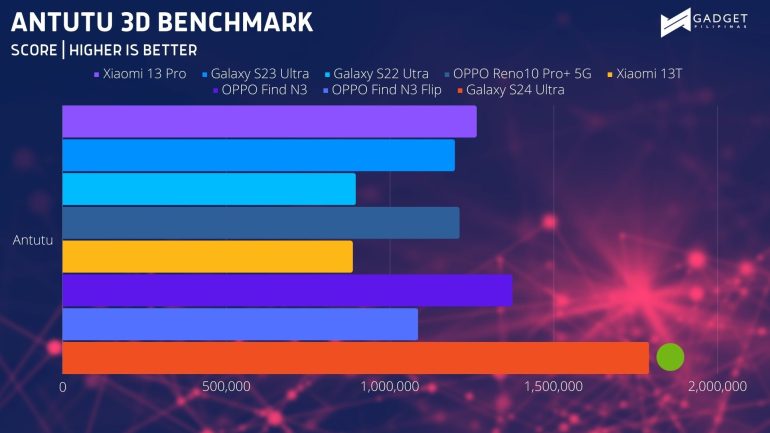
The benchmark test evaluates the device’s CPU (Central Processing Unit), GPU (Graphics Processing Unit), RAM (Random Access Memory), and storage performance. The tool generates an overall score based on the device’s performance in different tests, including CPU and GPU tests, RAM and storage tests, and user experience tests.
The Antutu Benchmark score is commonly used to compare the performance of different mobile devices and to identify the strengths and weaknesses of a particular device. Higher scores generally indicate better performance, but it’s important to note that the benchmark score is just one factor to consider when evaluating a device’s overall performance.
Geekbench 6
Geekbench is a cross-platform benchmark tool developed by Primate Labs that measures the performance of a computer’s CPU and GPU. It is designed to evaluate the single-core and multi-core performance of processors, as well as the performance of the system’s memory and compute capabilities.
Geekbench 6 uses a variety of workloads to test different aspects of a system’s performance, including image processing, encryption, and machine learning. The results are reported as a single score for the CPU and GPU, which can be used to compare the performance of different systems.
Geekbench 6 is widely used by hardware enthusiasts, tech reviewers, and manufacturers to test and compare the performance of different computer systems, including smartphones, tablets, laptops, and desktops. It is available for Windows, macOS, Linux, iOS, and Android, and is regularly updated to support the latest hardware and software platforms.
Geekbench 6 – Single Core
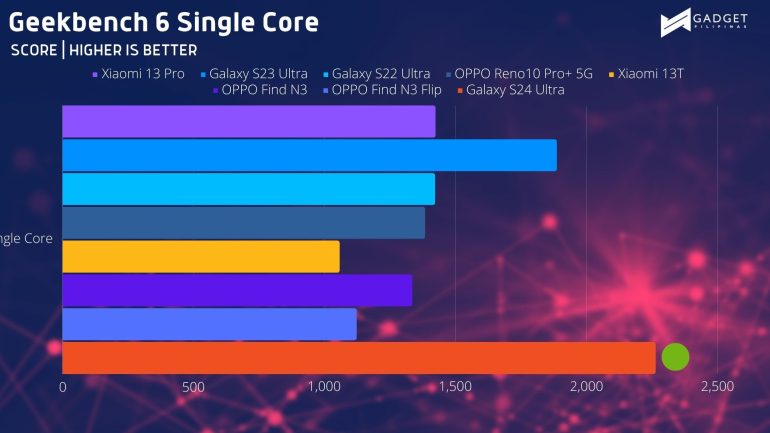
Geekbench 6 – Multi Core
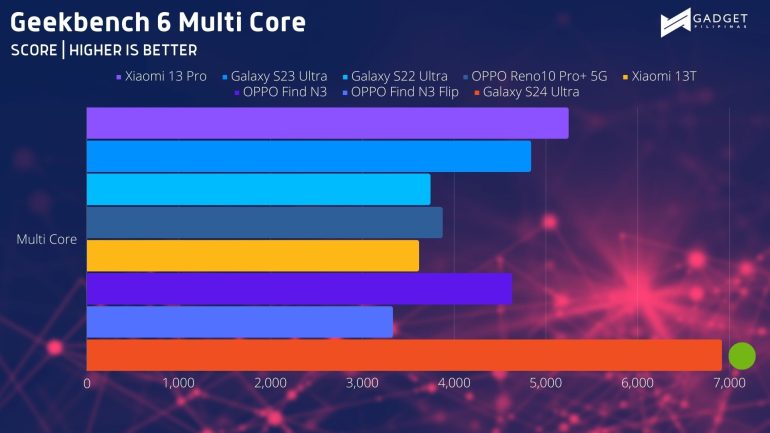
PC Mark 3.0
PCMark for Android is a benchmark tool developed by UL Benchmarks that measures the performance of Android devices, including smartphones and tablets. The tool evaluates the device’s performance in a variety of scenarios, such as web browsing, video playback, and photo editing, and generates an overall score based on the device’s performance.
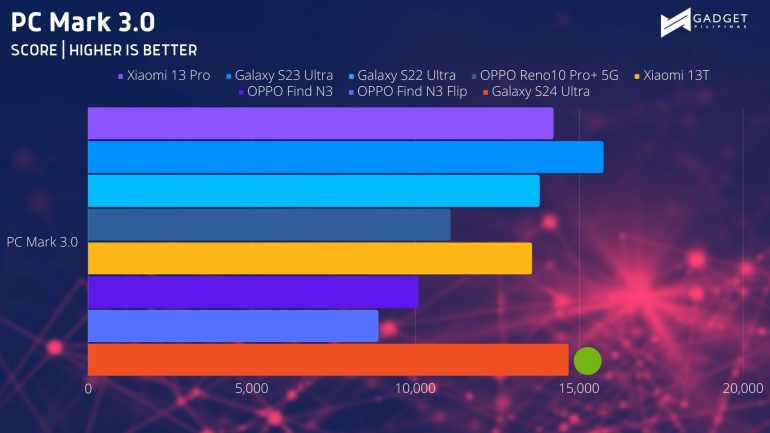
PCMark for Android includes several benchmark tests, each designed to evaluate a different aspect of the device’s performance. For example, the “Work 2.0” test evaluates the device’s performance in productivity scenarios, such as document editing and data manipulation, while the “Web Browsing 2.0” test evaluates the device’s web browsing performance.
PCMark for Android is widely used by hardware enthusiasts, tech reviewers, and manufacturers to test and compare the performance of different Android devices. It is available for download from the Google Play Store and is compatible with most Android devices running Android 5.0 or later.
Software and AI: Aspiration Over Reality
Samsung talks a big game regarding intelligent productivity and efficiency upgrades, but real-world functionality proves less mature currently. Voice transcription and notetaking summarization tools work really for the most part, but there are times when the phone struggles parsing multiple speakers or lengthy recordings. Accuracy takes a lot of AI training, and it would not take too long for results to get better.


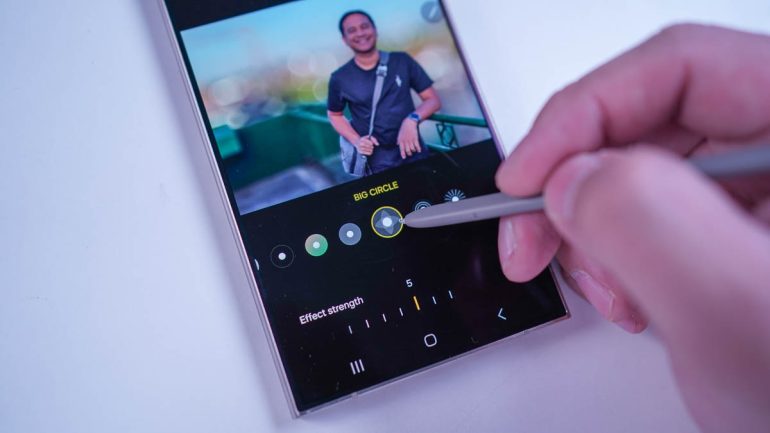
Unfortunately, however, most of the AI features found on the Galaxy S24 Ultra will not forever be free – a surprising detail that I almost missed in the fine-print. While it is unclear which among the AI features will remain free, this move will further raise a movement where AI features will evolve into “luxury features”.
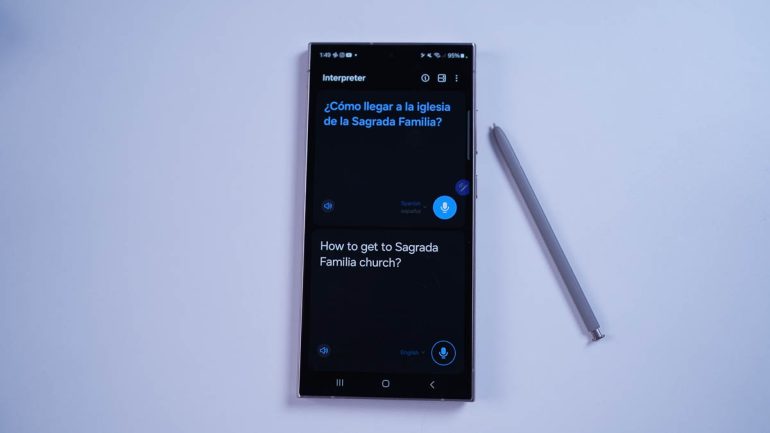
Camera Performance: Hardware Leads, Software Needs Catch Up
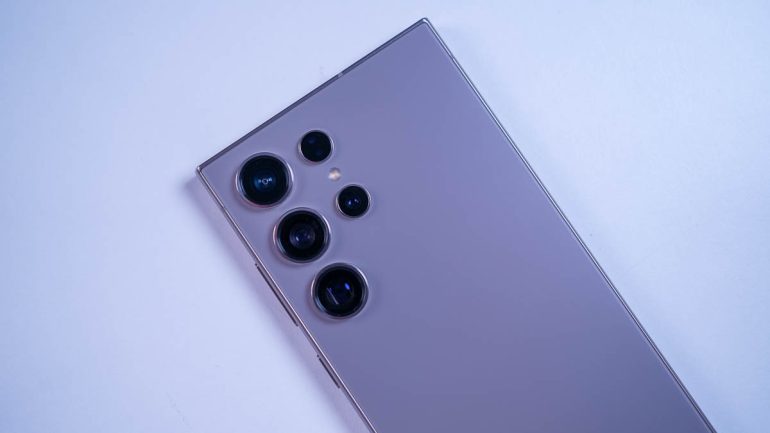
This generation’s excellent new 200MP wide sensor captures intricate detail and vibrant colors that avoid excessive processing compared to predecessors. Zoomed shots also benefit from a welcome 50MP telephoto upgrade while maintaining 10x hybrid optical reach.
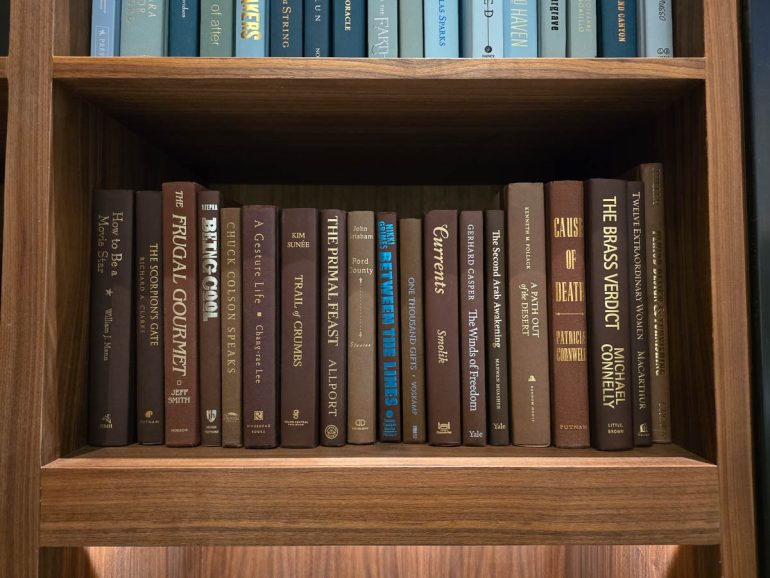
















Photos taken on the Galaxy S24 Ultra look impressive, to say the least. Skin tone looks more natural and the level of detail is wildly vivid and clear, sometimes even better than what the iPhone 15 Pro Max can do. There is no immediate need to jump from Galaxy S23 Ultra to Galaxy S24 Ultra if you are into taking ultra-zoomed photos; but the difference is highly evident when comparing S22 Ultra and S24 Ultra zoomed in photos.




The Galaxy S24 Ultra is definitely going stay as a staple accessory in the concert scene. However, there is currently a major issue that likely involves around its OIS in conjunction with its software. When zooming in to subjects while taking a video, the sensor tries to center the focused subject that results to unintended jolt. This is a major issue that can likely be fixed via software patch.
Battery Life: Marked Improvements Extend Runtime
Samsung has made significant improvements in battery optimization, thanks to their collaboration with Qualcomm on software and machine learning solutions. This has resulted in a remarkable 23% increase in efficiency, as reported by Samsung themselves. I tested this claim and can confirm that the battery life has indeed improved. With moderate usage, I was able to go a full 1.5 days on a single charge, which is a significant improvement over the previous S23 model that constantly needed to be topped up throughout the day.
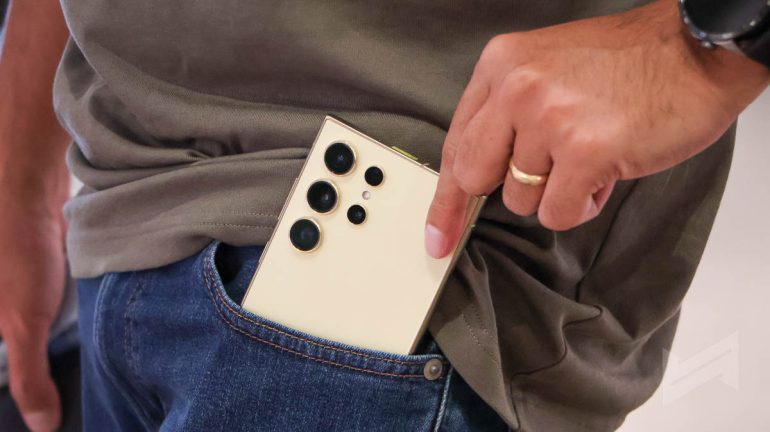
Furthermore, Samsung has also implemented quick charging capabilities, allowing the battery to reach about 50% in just 30 minutes with the help of USB-PD technology. This is particularly useful for busy individuals who need their devices to charge up quickly.
It’s worth mentioning that the Samsung phone still supports wireless charging, with speeds remaining as fast as ever at 15W. However, it lacks a magnetic back, which means you won’t be able to use “magsafe” compatible accessories. This is definitely understandable, and can easily be remediated since you can just buy “magsafe”compatible cases for the Galaxy S24 Ultra via Shopee or Lazada.
Temperature: Warmer Than Expected Under Stress
With the S24 Ultra’s powerful processing capabilities, it’s important to note that it does generate more heat. This is something that power users should be aware of. When pushing the device for intense gaming or using multiple demanding applications for extended periods of time, the external temperatures can reach concerning levels, reaching around 42-44°C in my trials. The titanium frame of the device seems to conduct heat rather than dissipate it effectively.
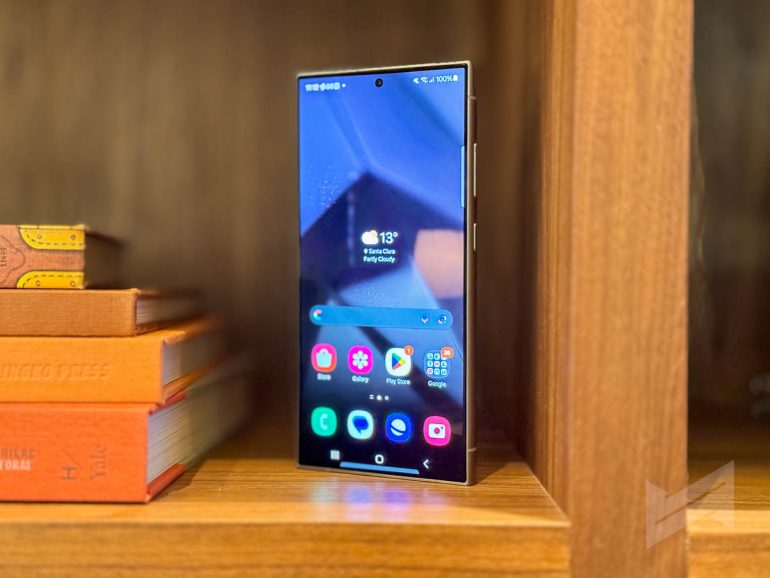
While this might not be a problem in typical day-to-day use, mobile gamers or creative professionals who engage in intensive operations should be prepared to experience noticeable warmth faster than expected for a high-end device in 2024. However, for standard usage, which is likely what most people engage in most of the time, this issue is not likely to arise. It’s worth mentioning that this is a concerning regression from the excellent thermal performance of last year’s model.
Playing it Safe Has Tradeoffs
The Galaxy S24 Ultra exemplifies Samsung’s approach of taking measured steps towards improvement rather than daringly experimenting with risky innovations. It manages to enhance important aspects such as visual quality, photography tools, and battery efficiency when compared to its predecessors. However, the device falls short in terms of its overly familiar design, unfinished productivity features, and unresolved issue of thermal throttling during sustained usage, ultimately making it more of a refresh than a revolutionary device.
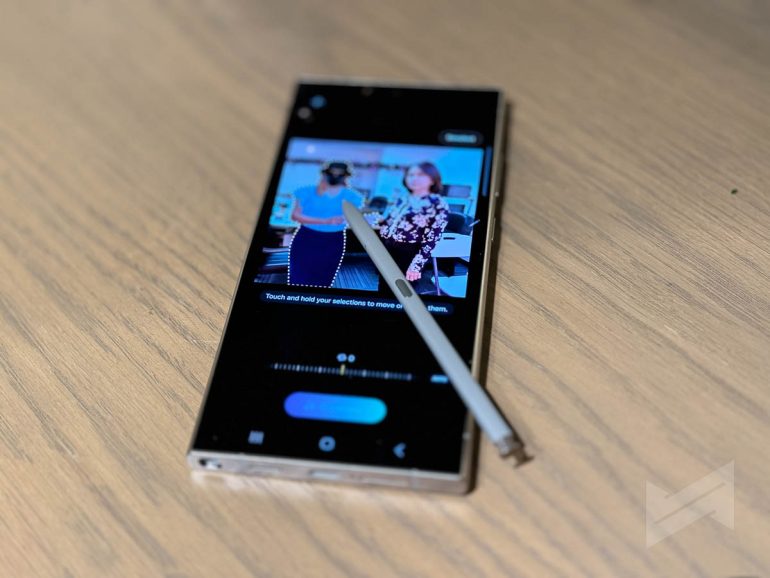
If you’re a die-hard Samsung fan, the S24 Ultra will definitely feel familiar and comfortable. However, the cautious choices made with its design and AI capabilities might cause it to be overlooked by more adventurous rival smartphones that are expected to be released later in the year. The enhanced camera hardware and software updates make it a worthwhile upgrade for S22 Ultra owners (but not so much for those with the S23 Ultra). But if you can wait a bit longer, you might be rewarded with a more groundbreaking device within the next six months.
The Galaxy S24 Ultra refines an already proven formula. Changes feel more evolutionary than revolutionary, with modest design tweaks, upgraded internals, and bolstered photography capabilities defining this generation’s enhancements. Battery runtime notably impresses as well. But ambitious AI features display unfulfilled potential so far. Don’t get me wrong – the AI features are extraordinary and pioneering, which I am totally having a great time, but some of the features are not exclusive to the Galaxy S24 series.
- Impressive gaming and productivity performance
- Improved cameras
- Still the king of zoom features
- Some AI features prove to be very useful
- AI is going to be a freemium feature after 2 years
- Phone struggles to fix stabilization when zooming in while taking a video
Giancarlo Viterbo is a Filipino Technology Journalist, blogger and Editor of gadgetpilipinas.net, He is also a Geek, Dad and a Husband. He knows a lot about washing the dishes, doing some errands and following instructions from his boss on his day job. Follow him on twitter: @gianviterbo and @gadgetpilipinas.






